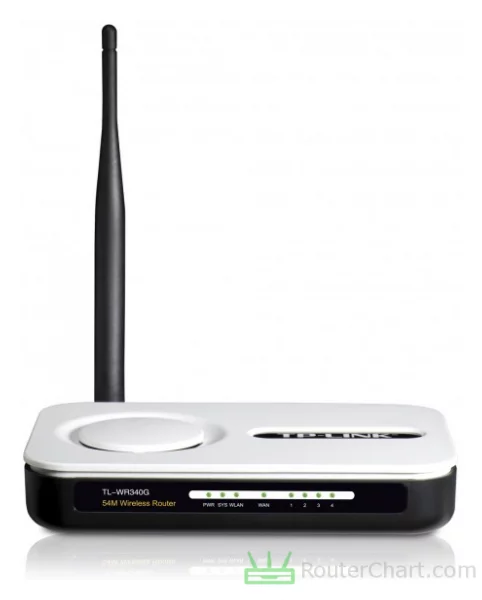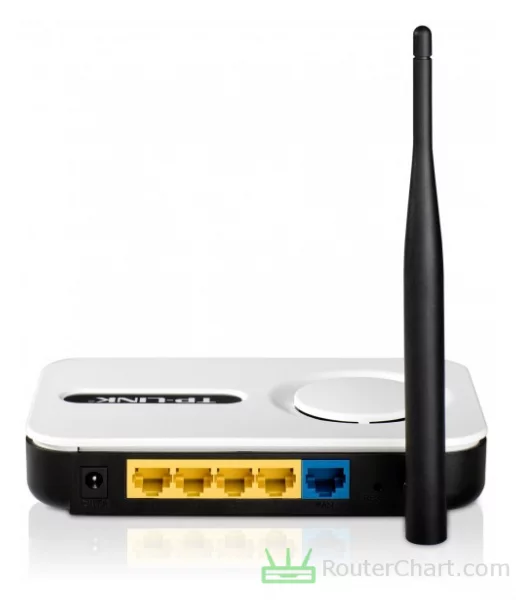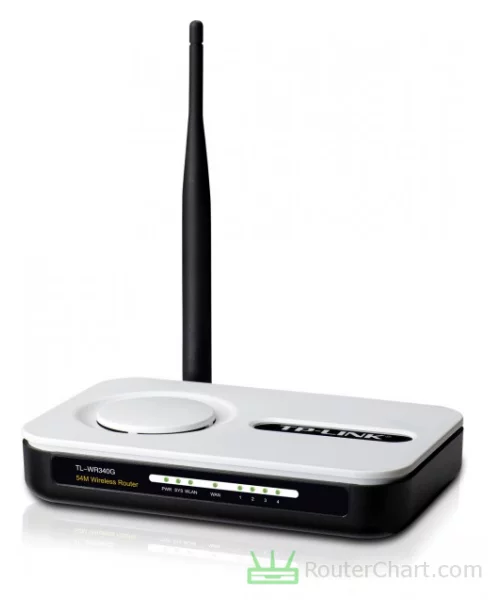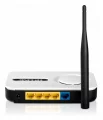TP-Link TL-WR340G router review
The TP-Link TL-WR340G (TL-WR340G) router released in 2007. It is powered by Atheros AR2317 @ 182 MHz chipset, 8 MB of RAM and 2 MB of flash. The G54 router is compatible with IEEE 802.11b/g standards, and the maximum speed that you can get with TL-WR340G is 54 Mbps. The router has 1 x 10/100 Mbps WAN and 4 x 10/100 Mbps LAN ports.
Table of Contents
Our personal experiences and opinions form the basis of this article. We aimed to share insights on a topic, and we hoped others would find it useful and inspirational. The specs below rely on official manufacturer data, but we also consider user reviews. If you noticed any mistakes or missing details about the TP-Link TL-WR340G, please let us know. Furthermore, we strive to deliver a thorough and precise overview.

This router is basic 2.4 GHz router. It provides reliable for small networks. TP-Link has received recognition and awards for their networking products.
TP-Link TL-WR340G specifications
| Brand | TP-Link |
|---|---|
| Name | TL-WR340G |
| Type | TL-WR340G |
| Rating | |
| Launch | 2007 |
Body
| Dimensions | 160 x 28 x 102 mm |
|---|---|
| Weight | 453 g |
If you have limited space, like in a small apartment or office, the dimensions can determine if it can fit there. The weight of a router can matter in some situations. But, it is usually not as crucial as other factors. These factors include features and compatibility.
System
| Chipset | Atheros AR2317 @ 182 MHz |
|---|---|
| RAM | 8 MB |
| Flash | 2 MB |
| OS | TP-Link |
| Power supply | 9 V / 0.8 A |
The Atheros AR2317 @ 182 MHz CPU is key. It, along with factors like RAM and firmware, decides how well the router works. The amount of RAM in a router can affect its performance. It also affects its capacity to handle concurrent operations and traffic. The 2 MB flash memory in the router serves as the storage medium for the router's firmware. Upgrading router firmware has become simple and user-friendly. The TP-Link provides the right power supply. It is 9 V / 0.8 A, this matches the router's voltage needs.

Network
| Protocols | IPv4 |
|---|---|
| LAN ports | 4 x 10/100 Mbps |
| WAN ports | 1 x 10/100 Mbps |
| Mobile network | no |
| VPN support | no |
Like many modern routers, the TL-WR340G supports many network standards too. Most networking equipment, like routers and switches, supports IPv4. Wired connections may bottleneck due to the limits of Fast Ethernet ports.
Wireless
| Antennas | 1 x 5 dBi |
|---|---|
| 2.4 GHz | yes |
| 5 GHz | no |
| 60 GHz | no |
| Standards | IEEE 802.11b/g |
| Class | G54 |
| Speed | 54 Mbps |
| Transmit power | 20 dBm |
| Security | WEP WPA WPA2 |
| Guest network | no |
The 1 x 5 dBi antennas allow sending and getting many data streams at once. This boosts overall throughput and improves Wi-Fi performance. The 2.4 GHz band is widely supported by many devices. This includes older ones that may not work with the 5 GHz band. The 802.11g operates in the 2.4 GHz frequency band, like 802.11b. But, it offers faster speeds and better performance. Real-world TL-WR340G router speeds are lower than its theoretical maximum speed.
WEP was the first Wi-Fi security protocol. But it is now seen as weak and easy to hack. The introduction of WPA2 (Wi-Fi Protected Access 2) improved upon WEP. It provides stronger security.

Connectivity
| USB ports | no |
|---|---|
| Print server | no |
| File server | no |
The TL-WR340G router doesn't have file-server or print-server functionality.
Administration
| Default IP | 192.168.1.1 |
|---|---|
| Default username | admin |
| Default password | admin |
If you can't log in to your TP-Link router's setup panel, try resetting it. A reset can help you troubleshoot. It is highly recommended to change the default password of your TL-WR340G router. Do this after the initial setup.
Pros and Cons
Every router, including this TP-Link one, has its good sides and not-so-good sides. Let's take a closer look at both to get a full understanding of what this router can do. We'll talk about what it does well and also where it could use some improvements. Just remember, this is just what I think, and you might see things differently.
Pros
- none
Cons
- insufficient memory
- insufficient flash
- lack of Gigabit LAN
- Non-gigabit WAN port
- missing Wi-Fi 6 support
- lacks Wi-Fi 5 compatibility
- reduced Wi-Fi bandwidth
- incompatible with WPA3
- missing WPS support
- no USB connectivity
TP-Link TL-WR340G photos




If there’s information about the TP-Link TL-WR340G that you would like to see on this site, then write to us.

